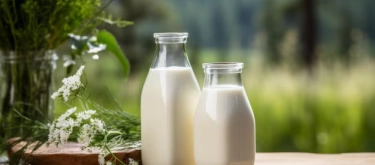Ghee: Taste, Uses, Benefits and Harm
Ghee is a clarified butter that is widely popular in Indian and Ayurvedic cooking, valued for its rich taste and high smoke point. Through a slow heating process, ghee acquires a nutty, caramelized flavor and aroma, making it a versatile culinary ingredient. This article delves into the flavor characteristics of ghee, its health benefits, uses in cooking, and tips for storage.

Primary Flavor Characteristics
Ghee has a rich, slightly sweet, and nutty flavor that differs from regular butter. Its taste is concentrated and deep, with subtle caramel notes, making it an excellent addition to dishes that benefit from enhanced flavor.
Aromatic and Taste Nuances
Ghee has a distinct caramel-nut aroma with light sweet and buttery undertones. Since the milk sugars and proteins are removed during preparation, it has a cleaner, less milky flavor than regular butter.
Scientific Description of Taste and Aroma
- Aroma: Nutty, slightly sweet with caramel notes.
- Taste: Rich, deep, and slightly sweet with a hint of caramel.
- Texture: Soft and smooth, melts easily, with a rich, buttery mouthfeel.
In-Depth Flavor Analysis of Ghee
Underlying Flavor Notes
Ghee has a multi-dimensional flavor profile with key flavor aspects:
- Nutty Note: The primary taste is a nutty sweetness that forms through slow heating, adding depth and richness to dishes.
- Subtle Sweetness: A mild sweetness from caramelized milk sugars lends ghee a soft, warm flavor.
- Caramelized Undertone: The clarifying process gives ghee a caramel-like taste, perfect for baking and frying.
Impact of Temperature on Flavor
- Room Temperature: Ghee remains solid but soft and spreadable, ideal for adding directly to foods.
- Heated: At high heat, ghee releases its aroma and enhances dish flavors without burning.
Textural Qualities
Ghee has a dense, smooth texture but melts easily, making it ideal for frying, baking, and enriching hot dishes.
Culinary Uses of Ghee
Primary Uses
- Frying and Sautéing: Ghee has a high smoke point (about 250°C/482°F), making it perfect for high-heat cooking.
- Baking: Ghee can be used in baking to add rich, caramel flavor to desserts.
- Sauce Making: Ghee adds a smooth texture and rich flavor to sauces.
- Topping: In some cultures, ghee is served directly on hot dishes like rice and flatbreads to enhance flavor and richness.
- Ayurvedic Medicine: Ghee is used in Ayurveda for its benefits in supporting digestion and overall health.
Ideal Pairings for Ghee with Foods
- Rice: Adds aroma and richness to rice, enhancing its softness.
- Vegetables: Roasted or sautéed vegetables gain a nutty flavor when cooked with ghee.
- Spices: Ghee pairs well with turmeric, cumin, coriander, and other spices, intensifying their aroma.
- Meat: Adds moisture and flavor to meats, especially in Indian dishes.
- Baked Goods: Ghee adds a unique aroma and improves the texture of pies, breads, and pastries.
Health Benefits of Ghee
Key Nutrients and Benefits
- Vitamins A, D, E, and K: Fat-soluble vitamins in ghee support immunity, bone health, and vision.
- Butyric Acid: Supports gut health and helps reduce inflammation.
- Short-Chain Fatty Acids: Aid digestion and provide a quick energy source.
- Antioxidants: Help protect cells and reduce inflammation.
Potential Precautions
- High Saturated Fat Content: Ghee is a saturated fat and should be consumed in moderation, especially by individuals with cardiovascular concerns.
- Dairy Allergies: While ghee is clarified to remove lactose and casein, those highly sensitive to dairy should consult with a healthcare provider.

Tips for Selecting and Storing Ghee
How to Choose Quality Ghee
- Color and Aroma: Good-quality ghee has a rich yellow color and a strong nutty aroma.
- Ingredients: Look for pure ghee made from natural butter without added ingredients or preservatives.
Storage Recommendations
- Room Temperature: Ghee can be stored at room temperature but should be kept in a cool, dark place with the lid tightly closed.
- Long-Term Storage: Ghee can be refrigerated to extend its shelf life and maintain freshness.
Fun Facts About Ghee
- Ancient Origins: Ghee has been known in India for thousands of years and remains an essential part of Indian culture and cuisine.
- High Smoke Point: Ghee has one of the highest smoke points among cooking oils, making it ideal for high-temperature cooking.
- Ayurvedic Properties: In Ayurvedic medicine, ghee is considered beneficial for digestion and balancing bodily energies.









